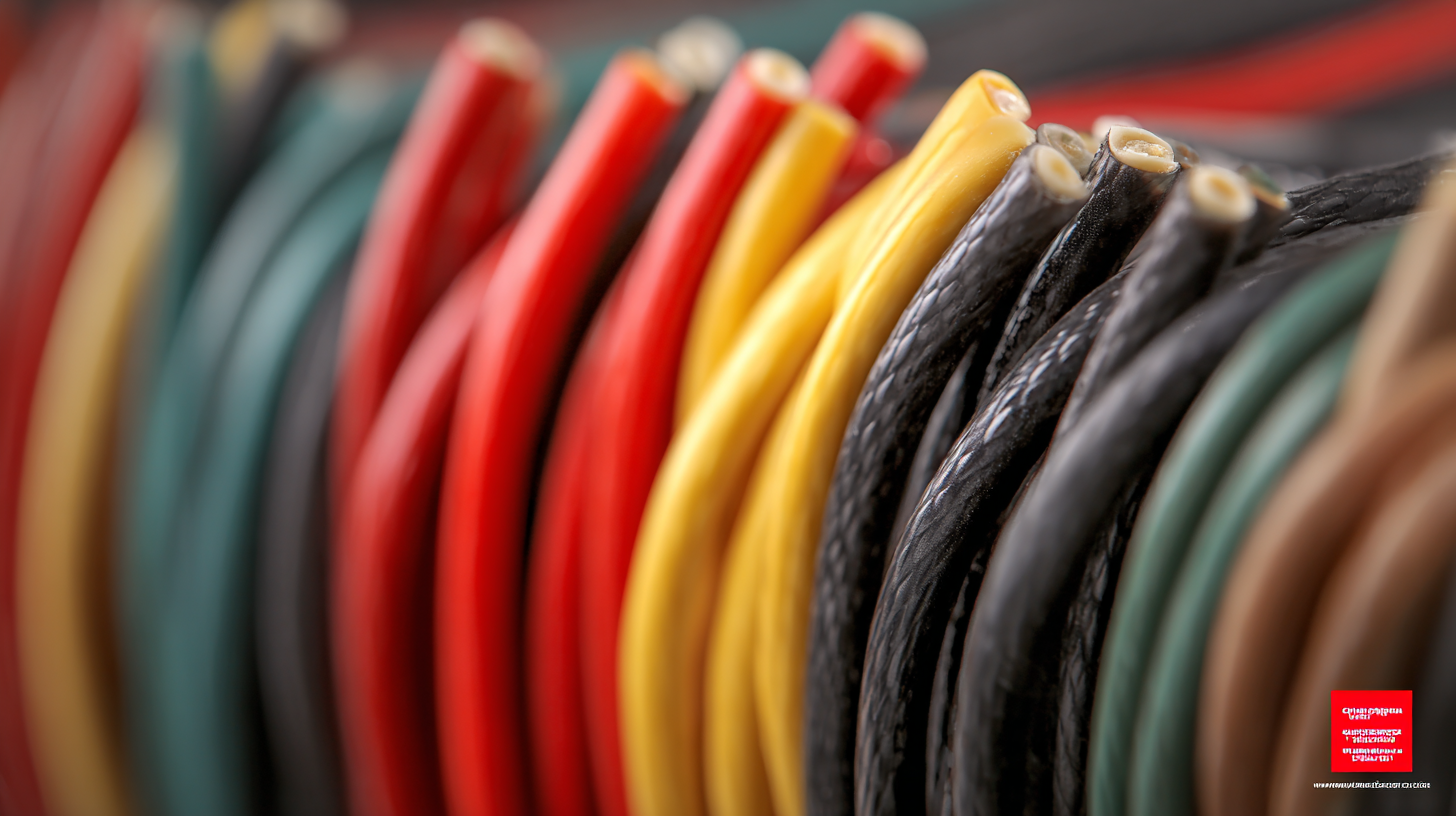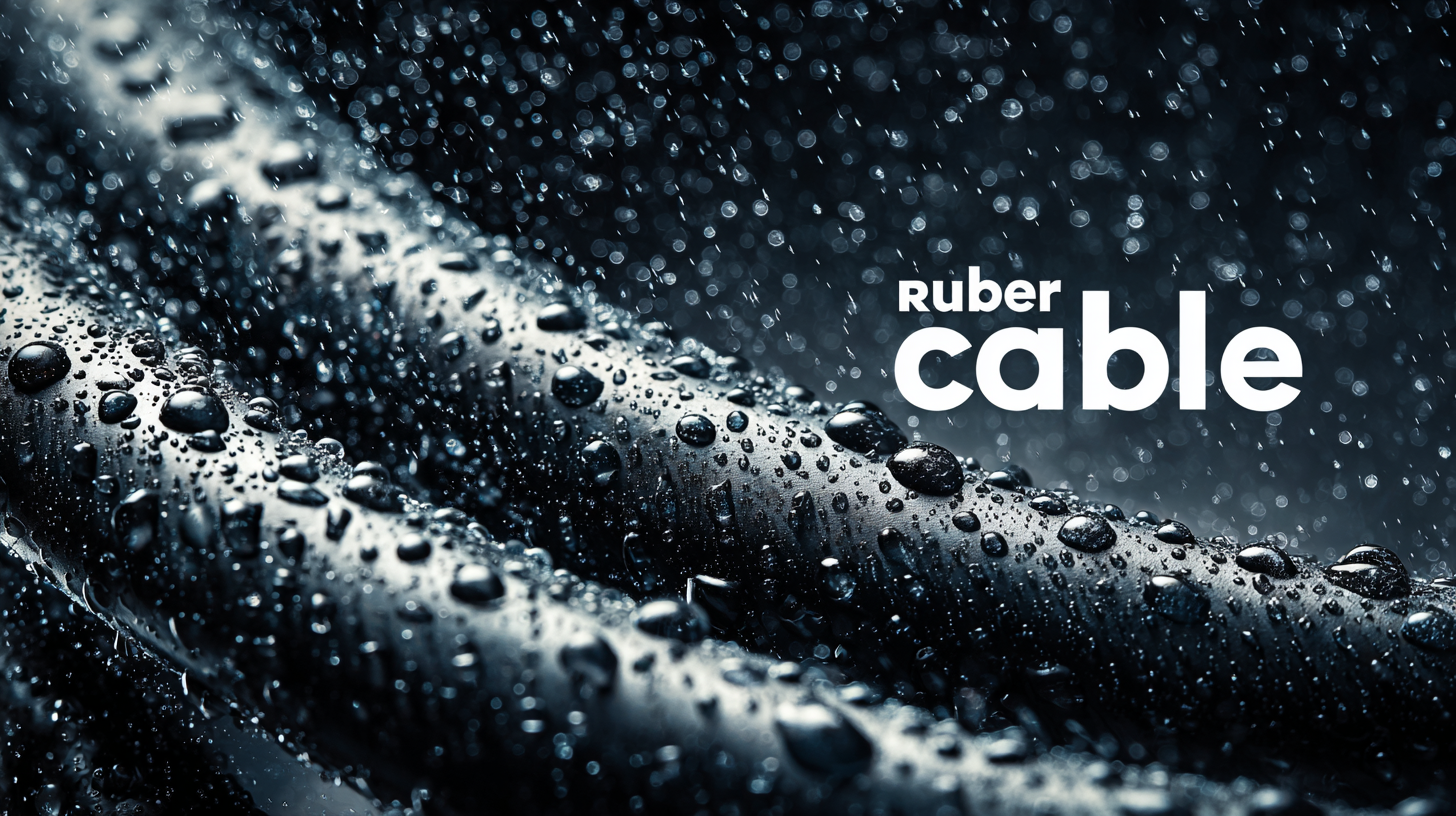7 Compelling Reasons to Choose the Best Rubber Cable for Your Industry Needs
In today’s fast-paced industrial landscape, the demand for reliable and efficient power solutions has never been greater. According to a recent report by Allied Market Research, the global rubber cable market is anticipated to reach $5.6 billion by 2025, driven by the increasing need for flexible and durable electrical connections in various sectors, including construction, manufacturing, and automotive.

Rubber cables are recognized for their superior resilience, adaptability to extreme temperatures, and resistance to abrasion and chemicals, making them a preferred choice for industry professionals. This blog will explore seven compelling reasons why opting for the best rubber cable is essential to meet the specific needs of your industry, ensuring operational efficiency and safety while maximizing return on investment.
Benefits of Exceptional After-Sales Service for Rubber Cable Users
When it comes to rubber cables, choosing a supplier that offers exceptional after-sales service is essential for maximizing your investment. According to a recent industry report by Grand View Research, the global rubber cable market is expected to reach USD 2.9 billion by 2025, highlighting a growing demand for high-quality products and support. Excellent after-sales service not only enhances customer satisfaction but also helps in minimizing downtime in industrial operations. A company that provides prompt support and maintenance plays a vital role in ensuring that any issues are quickly resolved, keeping your operations running smoothly.
Tip: Always inquire about the after-sales services offered by your cable supplier before making a purchase. This can include warranty terms, availability of technical support, and maintenance services.
Another significant aspect of after-sales service is the ability to access training and resources that can improve the safety and efficiency of cable handling and installation. The 2022 Electrical Safety Foundation International report emphasized that proper training can reduce electrical accidents by up to 50%. Therefore, a supplier that invests in educating its customers not only promotes safe practices but also fosters long-term partnerships that benefit both parties.
Tip: Consider suppliers that provide regular training sessions or resources that keep you updated on the best practices in rubber cable usage and maintenance.

Understanding Maintenance Costs: Why Quality Rubber Cables Save You Money
When it comes to industrial applications, the maintenance costs associated with electrical systems can quickly add up. A recent report by the Electrical Safety Foundation International reveals that improper maintenance can lead to a staggering 30% increase in operational costs. By investing in high-quality rubber cables, businesses can significantly mitigate these expenses. Quality rubber cables not only withstand harsh environmental conditions but also minimize the risk of breakdowns that necessitate frequent repairs or replacements.

Furthermore, the longevity of premium rubber cables contributes substantially to cost savings. According to a study published by the Institute of Electrical and Electronics Engineers (IEEE), cables manufactured with superior materials can last up to 25% longer than their lower-quality counterparts. This extended lifespan reduces the frequency of cable replacements and the associated labor costs, translating into an efficient allocation of resources. By choosing reliable rubber cables, industries can ensure safety, efficiency, and ultimately, substantial savings in maintenance expenses.
Digital Solutions for Monitoring Rubber Cable Performance and Longevity
The importance of digital solutions for monitoring rubber cable performance cannot be overstated, particularly in industries where safety and efficiency are paramount. With advancements in technology, companies are increasingly adopting digital tools that help monitor the condition and longevity of rubber cables. For instance, digital solutions can provide real-time data on cable performance, allowing for proactive maintenance. This proactive approach can significantly reduce downtime and operational costs, similar to how tire performance monitoring has been shown to save fleets considerable amounts annually.
Implementing smart monitoring systems can enhance your understanding of cable wear and tear, ensuring that replacements are made only when necessary. Tips for effectively monitoring rubber cable performance include setting up regular digital assessments to track performance metrics and utilizing data analytics to predict potential failures. Additionally, consider integrating these digital solutions with existing maintenance schedules to streamline operations and maximize efficiency.
Data from industry reports suggest that companies utilizing monitoring technologies can improve their cable longevity by up to 30%. These tools not only provide invaluable insights but also help in optimizing resource allocation, ensuring that your investment in rubber cables pays off in the long run. Advanced monitoring not only enhances operational safety but also aligns with broader industry trends towards sustainability and cost-efficiency.
7 Compelling Reasons to Choose the Best Rubber Cable for Your Industry Needs
| Feature | Importance in Industry | Performance Metrics | Longevity Factor |
|---|---|---|---|
| High Flexibility | Essential for applications with frequent movement | Flexibility Rating: 1000+ bends | Reduced wear over time |
| Weather Resistance | Critical for outdoor installations | UV Resistance: 6-10 years | Less degradation from environmental exposure |
| Chemical Resistance | Important for industrial environments | Chemical Exposure Ratings: Excellent | Longer lifespan in harsh conditions |
| Electrical Insulation | Key for safety and efficiency | Dielectric Strength: 20 kV/mm | Minimizes risk of failures |
| Temperature Resistance | Crucial for high-heat applications | Operating Range: -40°C to 90°C | Stable performance over temperature variations |
| Abrasion Resistance | Vital for frequent contact with rough surfaces | Abrasion Index: High | Increased durability in demanding environments |
| Cost Efficiency | Value for money in long-term use | Initial Cost: Moderate | Lower maintenance costs over time |
Expert Tips for Selecting the Right Rubber Cable for Your Industry Needs
When selecting rubber cables for industrial applications, several key considerations can ensure optimal performance and safety. According to a report by MarketsandMarkets, the global rubber cable market is expected to grow at a CAGR of 5% from 2021 to 2026, highlighting the increasing demand for high-quality materials across various sectors. Prioritizing properties such as flexibility, temperature resistance, and durability is crucial. These characteristics are especially vital in industries like construction and manufacturing, where cables face harsh environments and mechanical stress.
Experts recommend evaluating factors such as insulation type, voltage rating, and environmental conditions when choosing rubber cables. According to a study from Research and Markets, nearly 25% of cable failures are attributed to inappropriate insulation materials in extreme conditions. Ensuring that the selected rubber cable meets or exceeds the required specifications can significantly reduce downtime and maintenance costs, making it imperative for businesses to invest in the right type of cable tailored to their specific industry needs.
Real-Life Case Studies: Cost Savings from Choosing Quality Rubber Cables
When it comes to choosing rubber cables for industrial applications, the long-term cost savings can be significant. Real-life case studies have illustrated that businesses opting for high-quality rubber cables experience fewer breakdowns and maintenance needs, leading to decreased operational costs. For instance, a manufacturing plant that switched to premium rubber cables reported a 30% reduction in downtime due to enhanced resistance to abrasion and extreme temperatures. This shift not only boosted productivity but also contributed to a remarkable return on investment over time.
**Tips:** When selecting rubber cables, consider factors such as temperature range and flexibility. Choosing cables that can withstand harsh environmental conditions ensures reliability and longevity, ultimately saving money. Additionally, always verify manufacturer certifications to ensure the cables meet industry standards, as this can prevent costly failures down the line.
Another case study highlights a construction company that invested in high-quality rubber cables for their machinery. The resulting decrease in equipment failures translated into significant savings on emergency repairs and interruptions. Furthermore, using superior cables often means lower energy consumption, which can lead to even greater cost efficiency over the lifespan of the cables.
**Tips:** Evaluate the warranty and support offered by cable suppliers. A solid warranty indicates confidence in the product's durability, and reliable support can aid in troubleshooting, further minimizing potential losses.
